Download our Ebook
Jason Hanshaw
Co-author, "Automating Salesforce Marketing Cloud"
Director, Marketing Technology, FCB Health
When automating a given workflow or process within Salesforce Marketing Cloud, there are some simple principles that you should stick to in order to ensure that your solutions are both straightforward and effective.




Jesse Wu
Salesforce Marketing Champion, 2020
Managing Delivery Architect | SFMC Sr. Manager, Capgemini
Explore new features and implement them strategically. For example, will Einstein Send Time Optimization eliminate send times based on anecdotal logic rather than data? Will analysts be able to customize reporting better using Datorama instead of only traditional reports and data views? Although it can be tempting to implement as soon as they are available, adopt new features by first prioritizing each based on how well they satisfy business goals.




Lamin Ceesay
Salesforce Marketing Cloud Champion | Toronto Salesforce Community Group Leader Solution Architect, MarketCatch Inc
Lead Scoring and Grading are some of the most impactful features of Pardot, which in my opinion are the least utilized by customers. Lead scoring is based on prospect behavior and clear buying signals, such as page views, file downloads, email opens, and clicks, which helps you evaluate your prospects' level of interest and engagement. Lead grading, on the other hand, helps you choose prospects based on your business requirements such as location, revenue, size, title, or industry.




Markus Dang
Salesforce Marketing Champion
Marketing Cloud Unit Lead & Solution Architect, DIGITALL
When it comes to Automation Studio and especially automations that are used to process data (e.g. for segmentation), users tend to include all available data and refresh as often as possible. Usually, this is far off from what is actually required for their use case.



Corrina Cohen
SFMC Marketing Champion
Business Engagement Manager - Marketing Automation, NBC Sports
- Reduce regularly occurring automation errors on data or counts by adding a validation step to skip that instance instead of erroring.
- Use staging tables to optimize your queries involving large sets of data.
- SFMC support can index additional fields you commonly used for queries that are not your primary key.





Natasha Martin
Salesforce Marketing Champion
Manager of Marketing Automation & Salesforce Marketing Cloud, Love's Travel Stops
Customer segmentation
As a company, you want to prioritize the right data so you can effectively segment and communicate with customers to drive revenue, create loyalists for your brand, and attract new customers.
To do that, there are some important questions to answer to help define your customer segmentation strategy



Kirsten Schlau
Salesforce Marketing Cloud Practice Lead, Sercante
Tips for Ensuring Consistent & Flawless Email Delivery
Before testing your email sends—even after SAP is enabled for your account—be sure to contact your company's internal IT team to allowlist Marketing Cloud IP addresses and add Marketing Cloud domains to their trusted servers list. This step ensures you receive your test emails. There's nothing more maddening than sending tests and you can't receive them!





Nicole Anaya
Salesforce Marketing Champion
Salesforce Consulting Partner, Devs United
Building an automation is not only about just putting some steps together, if you really want to build an automation that is efficient, scalable, and easy to maintain here are a few tips



Natasha Gilani
Salesforce Marketing Cloud Champion
Salesforce Marketing Cloud Architect, Accenture
Marketing Automation involves the technologies (products) and processes that deliver personalized and automated customer experiences. What does that mean? Let's meet Anita; Anita is a marketer who works at Shoes.com, a fantastic shoe apparel store. Anita has to work on a spring campaign to advertise a new pair of custom shoes designed for May.




Oana Munteanu
Salesforce Marketing Cloud Champion
Senior Marketing Consultant, Bluewolf, an IBM Company
One of the first things that come to mind, and which should be standard practice for all Marketing Cloud users, is automating the extract of tracking reports available from Data Views (MC back-end reporting tables) to be used in conjunction with other reporting data available from your CRM, website, e-commerce site, etc to better understand your customer's behavior across the organization (360-degree view).




Heather Ilsley McCullough
Salesforce Marketing Champion
Digital Platform Architect, Shift Paradigm
Sending an email report via Automation Studio? Insert a validation activity in the step prior to the email send to avoid sending a blank report!



Effectively executing marketing automation with the help of Salesforce Marketing Cloud can pave the path for improved lead nurturing and customer relationships, thereby providing you with the tools to scale your operations and amplify your gains in the long run.
Follow the best practices shared by these experts to the T, and we assure you nothing can stop your business from achieving excellence!
How To Make The Most Of SFMC Automation?
11 Experts Share The Best Practices To Follow

Jason Hanshaw
Co-author, "Automating Salesforce Marketing Cloud"
Director, Marketing Technology, FCB Health
When automating a given workflow or process within Salesforce Marketing Cloud, there are some simple principles that you should stick to in order to ensure that your solutions are both straightforward and effective.
Start Small:
While it can be tempting to jump in and start automating large, complex, processes within your organization, you should always start small and look for opportunities that offer the greatest value for the smallest level of effort. Automating repetitive tasks in your workflow that are both low-effort, low-risk and high-reward ensures that you're immediately creating value whilst not impacting other ongoing initiatives.
Know Your Flow:
It goes without saying, but you cannot sufficiently automate a process that you don't sufficiently understand. Without fully grasping the current flow from end to end, you are unable to adequately identify the core components and the impact, or feasibility, of automating any individual point within the overall process. Documenting and mapping the full workflow, before identifying opportunities for automation, ensures that you're keeping the program goals in focus and drafting efficient solutions that fit within the existing processes.
Stay Focused:
There are always new features or capabilities being introduced to users within Salesforce Marketing Cloud but, for the sake of your solutions, it's important that you stay focused on the original objectives you've outlined for your workflow automation during the planning stages of the project. While it might be tempting to further expand the capabilities of your solution, or even restructure it entirely to take advantage of a new feature, this can derail the project and lead to costly overruns. Stay focused on the task at hand, and leave any improvements for future development.

Jesse Wu
Salesforce Marketing Champion, 2020
Managing Delivery Architect | SFMC
Sr. Manager, Capgemini
Explore new features and implement them strategically. For example, will Einstein Send Time Optimization eliminate send times based on anecdotal logic rather than data? Will analysts be able to customize reporting better using Datorama instead of only traditional reports and data views? Although it can be tempting to implement as soon as they are available, adopt new features by first prioritizing each based on how well they satisfy business goals.
Treat journey settings like business requirements. New and experienced SFMCers alike may forget to review the settings with business stakeholders until they're ready for activation. Don't do that! While gathering requirements, discuss details that will help you choose between using journey and contact data and how to configure contact entry mode (No re-entry, Re-entry anytime, Re-entry only after exiting).
Think critically about your entry DE import strategy. Account for business requirements and technical limitations like high watermark, which is one of the ways to ensure contacts are injected or rejected for the journey.
Einstein requires activation and time to collect data. Einstein activities may appear in Journey Builder even when not activated. Ensure you follow proper setup steps and contact Support or your Account Executive when needed. Also, artificial intelligence like Einstein and Interaction Studio require historical data, which often only begins after activation.

Lamin Ceesay
Salesforce Marketing Cloud Champion | Toronto Salesforce Community Group Leader Solution Architect, MarketCatch Inc
Lead Scoring and Grading are some of the most impactful features of Pardot, which in my opinion are the least utilized by customers. Lead scoring is based on prospect behavior and clear buying signals, such as page views, file downloads, email opens, and clicks, which helps you evaluate your prospects' level of interest and engagement. Lead grading, on the other hand, helps you choose prospects based on your business requirements such as location, revenue, size, title, or industry. By using them together, you will be able to qualify your prospects and nurture them effectively before assigning them to your sales team. There are a few things you could do to ensure that you're building the most effective models.
- Always involve your sales team, right from the start, when building your scoring and grading models. Since your Sales Reps would know the best as to when a prospect is ready to buy, they would be able to guide you effectively. They will also suggest to you which assets and activities are the most important in identifying a prospective lead.
- It is also very important to grasp the difference between prospect interest and prospect intent before setting up scoring. By looking into a typical buyer's journey, one would be able to understand what each action would indicate about a prospective buyer. Some activities such as filling in a "Contact Us" form or "Requesting a Demo" are strong indications of interest, whilst activities such as "Opening an email" or "Viewing a landing page" indicate intent. The scores should be weighed accordingly.
- Lead Grading reflects on the persona, fit or demographic, so we could start by defining our ideal customer profile. Whilst considering factors such as job title, industry, company size, etc, we could also use the BANT methodology which helps sort it based on Budget, Authority, Need, and Timing.
- Finally, the most important thing is to re-evaluate your qualification process over and over again. Without historical data, it is almost impossible to get it right the first time. The best practice is to periodically reevaluate and adjust your approach.
The bottom line is to start utilizing scoring and grading if you have not done so already. Even if you don't have all the needed information, you could start by setting up a model, observing the patterns and KPIs, and improvising as you go along.

Markus Dang
Salesforce Marketing Champion
Marketing Cloud Unit Lead & Solution Architect, DIGITALL
When it comes to Automation Studio and especially automations that are used to process data (e.g. for segmentation), users tend to include all available data and refresh as often as possible. Usually, this is far off from what is actually required for their use case.
To avoid these mistakes, ask yourself the following questions when setting up an automation:
- What data do I really need (rows and fields)?
- How often will (critical parts of) that data change?
- How often will I use that data?
Based on your answers, schedule as infrequently as possible and as frequently as necessary. Data should be included and processed only when absolutely necessary.
Which errors can be prevented by doing that?
- Canceled sends due to data extensions being updated during send time
- Usage of incomplete data due to accessing it in between automation steps
- Timeouts or slow processing time due to a large number of fields
…and many more
Another common pitfall is automations that are paused because someone opened/edited one of the activities. Often users forget to re-start automations after looking at an activity within. To make sure this doesn't happen to you and goes unnoticed, consider one of the following options:
- Set a run completion notification for your most critical automations so you can directly react if one of them didn't run
- Create an automation that uses a script activity to check your most critical automations and notifies you if one is inactive (for an in-depth explanation including all the necessary code, check out my related article: https://markus.codes/automation-status-notification)

Corrina Cohen
SFMC Marketing Champion
Business Engagement Manager - Marketing Automation, NBC Sports
- Reduce regularly occurring automation errors on data or counts by adding a validation step to skip that instance instead of erroring.
- Use staging tables to optimize your queries involving large sets of data.
- SFMC support can index additional fields you commonly used for queries that are not your primary key.
- Partner with other groups within your company. While you may see yourself in a silo, your subscribers or customers are expecting a seamless experience with your brand. They don't care if your social media team didn't know that your web and email team partnered for a campaign and didn't include them when they post a complaint.
- Create a plan for testing your automation or journey before you build it. While the testing tools in journey builder can evaluate your paths, it cannot test for missing data or miscalculated wait periods.
- Lead scoring is only as good as the leads you acquire. No amount of scoring system is going to improve your workflow if the leads you receive are not interested in your product.
- Customer segmentation can go beyond demographics or purchases. Flag your high-performing or engaging customers as a segment and use that segment to compare how your overall program is performing. If you see a large drop in your highest group, you can bet that the rest of your audience also feel fatigued.
- Your workflows can include personalized touchpoints outside of digital messaging. Is a big spender suddenly unengaged? Try automating a special offer via a mailer or if you are B2B have an account manager personally reach out.

Natasha Martin
Salesforce Marketing Champion
Manager of Marketing Automation & Salesforce Marketing Cloud, Love's Travel Stops
Customer segmentation
As a company, you want to prioritize the right data so you can effectively segment and communicate with customers to drive revenue, create loyalists for your brand, and attract new customers.
To do that, there are some important questions to answer to help define your customer segmentation strategy:
- What are the most important actions that identify how and if a customer engages with your brand?
- How do you define an engaged customer? What actions or behavior qualifies them as an engaged customer vs. an unengaged customer? How would you want to bucket those actions or behaviors?
- What about the "somewhat" engaged customer who makes a purchase once or twice a year?
- Are there opportunities to upsell during those one or two transactions?
- Are there opportunities to get them excited about an upcoming promotion to increase their number of visits to your website or location?
- Are there opportunities to re-engage at different times of the year or with specific offers based on purchasing behavior of customers with similar profiles?
Once you have identified your segments, go find the data within your organization or partner with an analytics team to help you define those important customer aggregations and plan out your data architecture strategy to support that.
While defining that data strategy, you need to consider whether a resource with SQL skills will be available to help create custom segments inside of Marketing Cloud with that data. This skill set is strongly recommended but there are drag and drop tools like DESelect that allow users with no SQL skills to implement more complex segmentations.

Kirsten Schlau
Salesforce Marketing Cloud Practice Lead, Sercante
Tips for Ensuring Consistent & Flawless Email Delivery
- Before testing your email sends—even after SAP is enabled for your account-be sure to contact your company's internal IT team to allowlist Marketing Cloud IP addresses and add Marketing Cloud domains to their trusted servers list. This step ensures you receive your test emails. There's nothing more maddening than sending tests and you can't receive them!
- Don't skip IP warming - if you send at least 50K emails per month at least twice a month (100K total per month) you'll need to warm up your IP address.
- Use a tool like Litmus or Email on Acid to ensure your email is rendering properly across multiple environments. While you don't have to do this every time, we recommend running through a tool anytime a new email/template is being built/used for the first time and every couple of months as a good housekeeping best practice, especially as new devices/upgrades occur.
- Have a standard QA checklist on hand - we're humans and naturally make mistakes, by using a checklist that you physically go through every time you send an email or campaign can help you avoid costly mistakes.
- Leverage a Double QA process - meaning, don't rely on the person building the email to QA - that's like grading your own work. Ensure someone besides yourself is QAing the email.
- Invest in a deliverability monitoring tool such as Inbox Monster - which integrates with SFMC and can provide unlimited inbox placement tests and comprehensive deliverability analytics along with a full suite of professional services and collaboration tools.
- Use Content Detective - a tool within SFMC Email Studio that can help keep your messages out of your subscriber's spam folders by identifying potential content that may come across as spam, before emails are sent.
- Ensure your personalization is on point with Subscriber Preview - to render what the email will look like for a specific subscriber. We recommend identifying 'testing personas' to ensure you have all your bases covered for all your personalization points. This can be done via live/real subscriber data or through 'dummy' test data to cover all your scenarios.
- Use Journey Builder's test feature - specifically with a data extension. This test mode allows you to view their simulated paths through the journey without sending messages to them or affecting tracking or reporting. It simulates random and decision split activities, but ignores wait times and contact entry settings. You get an accurate view of how a journey works without the wait. After the test is complete, the journey canvas shows each contact's expected path. This is a crucial time-saver. Gone are the days of running a live test that takes 2-3 weeks before you know it's been configured correctly.
- Avoid getting blacklisted - we may be stating the obvious however it's a big one. Once you're on the naughty list it's very difficult to get off which can be very costly for your organization. Ensure you're employing optimal sending practices at all times. All it takes is one spam tap or one list buy (don't do it) and you're up a creek without a paddle.

Nicole Anaya
Salesforce Marketing Champion
Salesforce Consulting Partner, Devs United
Building an automation is not only about just putting some steps together, if you really want to build an automation that is efficient, scalable, and easy to maintain here are a few tips:
Before you start building anything within SFMC, take a moment to make sure you understand the requirement clearly, what I mean by that is that you should be able to answer these questions:
- What is the problem you're trying to solve with this automation?
- Which asset or action do you need as the result of this automation to solve this problem? e.g. file export, an email sent, a subscriber update.
- Are there any other systems, platforms, or processes that need to be involved in this process besides the automation?
- This automation, will require some kind of manual task? how could we make this manual task easier to do on a daily basis.
Make a diagram of the entire process.
It's very common that an automation is just part of a bigger process, like importing a file from a data warehouse to send an email through journey builder or exporting Marketing Cloud metrics to a BI platform to join with other metrics. So when you're building the solution make sure you're considering the entire process and not only the automation itself. e.g:
- Validate the solution with the responsibility of all systems or processes involved.
- Coordinate triggers or scheduling frequencies between the different elements.
- Identify which data are you going to need in every step of the process and how that data is going to pass from one system to the other one, in terms of integration, data modeling, frequency, format, etc.
- When testing, test the entire process not only the automation because when you run all the pieces together you could find problems that you couldn't identify if you only test the automation.
Efficiency and scalability.
Only add the elements to the process that you know that you're going to need to solve your current need, don't complicate yourself trying to solve also future "possible" problems that could never happen.
But also make the solution and the data modeling as simple as possible to you can add more elements if necessary in the future.
Maintenance.
As I mentioned, an automation a lot of times are tied to other processes, like journeys, or processes on other platforms. But even if it's only an automation, within the automation you have multiple elements like data extensions, file locations, and emails.
So make sure when you have the final version of the entire process to create complete documentation that includes a diagram of the big picture of the entire process and another document with the list of all the elements. So if in the future you need to edit a step of the process you can identify the possible impact in other elements and adjust accordingly in order to minimize the risk of breaking the process.

Natasha Gilani
Salesforce Marketing Cloud Champion
Salesforce Marketing Cloud Architect, Accenture
Marketing Automation involves the technologies (products) and processes that deliver personalized and automated customer experiences. What does that mean? Let's meet Anita; Anita is a marketer who works at Shoes.com, a fantastic shoe apparel store. Anita has to work on a spring campaign to advertise a new pair of custom shoes designed for May. She works with her internal stakeholders (the branding team, data team, content team, design team, and others) to finalize the campaign. She builds out the campaign in Salesforce Marketing Cloud's Journey Builder and sets it up so it runs for the months of April and May automatically without any further inputs from her. She will continue to monitor the campaign's results and share them with the teams.
This work involving the technology (Salesforce Marketing Cloud) and processes (intake, data readiness, reporting, etc.) to build and automate her spring campaign is an example of marketing automation.
Anita's campaign automation is just one example of marketing automation. Across the world, hundreds of thousands of marketers build and launch similar campaigns daily that all collectively encompass this space. While there is no one-size-fits-all approach to marketing automation campaign creation and execution, there are some best practices that marketers can employ to ensure success. These are listed below.
- Start with strategy. Always! Determine what the overall purpose of the campaign is. What are its goals? Is this an acquisition campaign, conversion, engagement, or other? Who is your target audience? What is the ideal timing for this campaign? How are you measuring success? These are questions that need to be answered at this stage. Try and be as quantitative as possible.
- Nail down requirements. Once you have clarity on the overall strategy, work on nailing down your requirements. This will bring further precision to your campaign execution. It will also help you identify missing elements that you need to work towards (such as content, assets, and data).
- Regarding data requirements, identify all the data you will need for your campaign (personalization data, behavioral data, targeting data) and that data only. Marketers sometimes make the mistake of bringing in more data than they need or will use, which tends to get expensive in the medium to long term.
- Create a campaign workflow. This is a great way to visualize your end-to-end campaign process. Use a whiteboard tool or Visio (or similar) to draw out its flow. That will help you and your teams identify the number of messages, channels, timing, data inputs, and any decision criteria. A workflow will also help you visualize where you may need to make edits and updates - best to do it at this stage instead of skipping this step and having to do it during the campaign build. Don't forget to keep the end-user experience in mind. Just because you think something will work, doesn't necessarily mean that it will. Think of your end-user: does your workflow look like it will serve their needs?
- Plan carefully. Work backwards and build a work breakdown structure (WBS) to identify all the project management activities involved in your campaign creation process, and it will also help you plan dependencies. Also, plan for downtimes and keep an eye on Salesforce's release cycle and work around that. Planning is a critical step to ensure marketing automation campaign success as it will help you get more efficient.
- Data integration and ingestion take time. You should have identified your data requirements at an early stage. You should also have identified the location of this data and determined if this data is ready to use, or if it needs to be integrated. Data integration often takes time and requires multiple teams. So plan accordingly and dedicate a percentage of your planning to data integration. In most cases, this step takes the most effort.
- Create engaging content. Keep the image to content ratio at 20:80. Keep the content brief and specific. Don't forget clear CTA's.
- Crawl, walk, run. It is always tempting to get as advanced as possible but if you are low on the marketing automation maturity curve, it is best (and least risky) to start with a gradual approach to marketing automation maturity. Start with a simple automated campaign (a couple of emails, a simple journey, basic personalization, single-channel), and then build up to more advanced campaigns (more elaborate journey, multi-channel, decision splits, advanced segmentation, advanced personalization). This way you will incorporate learnings from your simple ("crawl") campaigns into your advanced walk and run campaigns.
- Keep even the most advanced campaigns simple. Journey Builder is an advanced and powerful tool and you can build elaborate, multi-step campaigns with dozens of activities on the canvas. But just because you can, doesn't mean you have to. Always aim for simplicity and functionality. An overly elaborate campaign will be equally difficult to manage, maintain and debug.
- Test, test, test. Incorporate testing at every step of the process. Unit test each data point, piece of content, email, SMS - every single component. Then work towards other types of testing: end to end, smoke, UAT. Don't leave testing to the end - that's a recipe for disaster.
- Measure results. Measure and analyze how your campaign is performing. Monitor daily, and produce weekly and monthly dashboards to track the overall campaign performance, and specific channel performance (for email, open rates, clickthrough rates, unsubscribe rates, etc.).
- Optimize. Use campaign results to further optimize and tweak your always-on marketing automation campaign periodically (at least every 6 months). This will ensure the campaign remains ever-green and updated.

Oana Munteanu
Salesforce Marketing Cloud Champion
Senior Marketing Consultant, Bluewolf, an IBM Company
- Reporting and extracting tracking data out of Marketing Cloud
- Monitor the performance of automations
One of the first things that come to mind, and which should be standard practice for all Marketing Cloud users, is automating the extract of tracking reports available from Data Views (MC back-end reporting tables) to be used in conjunction with other reporting data available from your CRM, website, e-commerce site, etc to better understand your customer's behavior across the organization (360-degree view).
Secondly, is to have a process in place to actively monitor these automations in case they are failing. This is essential to maintaining process continuity and avoiding mistakes and errors from happening. It is a basic activity, however, I have seen so many clients that don't have any fail-safe in place and have no idea when automations stop working.

Heather Ilsley McCullough
Salesforce Marketing Champion
Digital Platform Architect, Shift Paradigm
Sending an email report via Automation Studio?
Insert a validation activity in the step prior to the email send to avoid sending a blank report! Drag a Verification Activity into the workflow right before the email deployment, Select the Data Extension that holds the report data, set the Conditions to – count is greater than 0, Then select the check boxes under Trigger Actions for both Stop Automation and Send Email Notification. The validation activity will then stop the automation from sending the email with a blank report, and then send a message about the lack of results to the chosen recipients. So, your team will know why they're not getting a report. Validation activities can be applied in other scenarios as well, so make sure to set expectations for this step within the context of your automation.






 +1 213 674 6665
+1 213 674 6665 contact@uplers.com
contact@uplers.com

